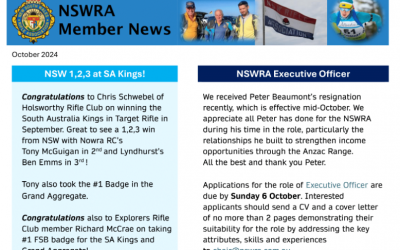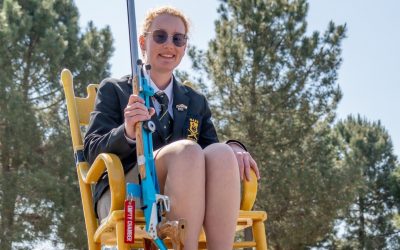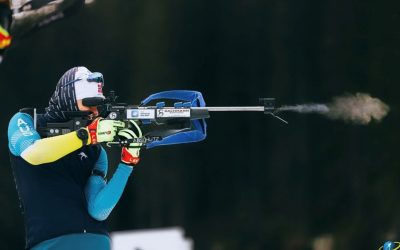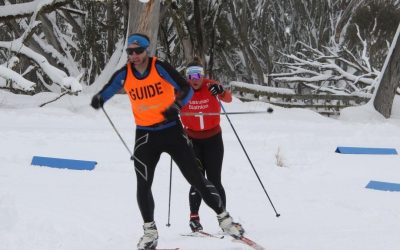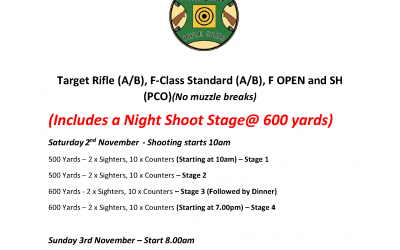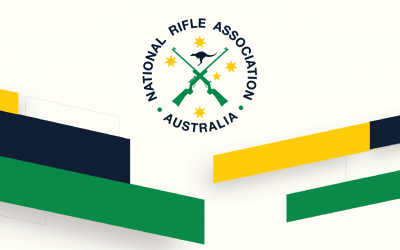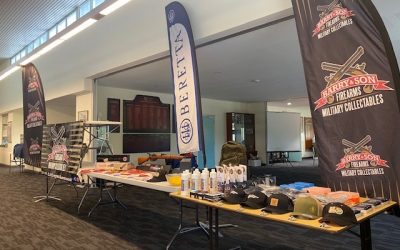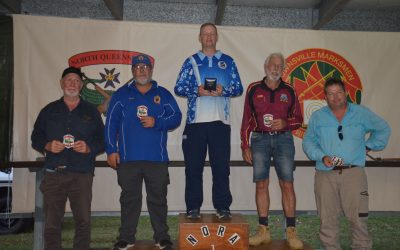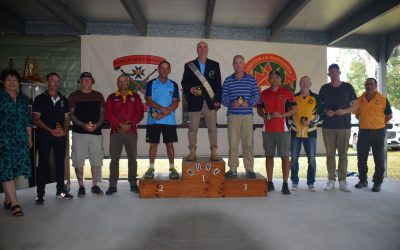Special guests:
Patron NQRA – Ms Glenys Schuntner
President NQRA – Mr Eric Christie – great nephew and nephew of two former Herbert River Rifle Club members killed in both World Wars
Chairman NQRA – Mr Marty Eiteneuer
Patron TDRA – Mrs Janine Mahony
Patron TMRC – Mr Les Tyrell OAM
Vice President Qld RSL & President Townsville RSL – Mr Bill Whitburn OAM
CO 31/42 RQR – LTCOL Dave Gandy
RSM 31/42 RQR – WO1 John Stafford
31 Bn Assn – COL Greg Stokie, Ron Piper and members
NRAA Board Member & VRA Chairman – Mr Albert van Wyk
NQRA Councillors
NQ Club Captains
Father Dave Lancini – Father Dave has served his entire life in NQ parishes
Mr Lux Foot – nephew of six former Townsville Rifle Club members before 1915 – two were killed at Gallipoli

Before dedicating the memorial, we should reflect on our past and acknowledge that our sport grew from the defence of our State then Nation.
Prior to Federation, the early schemes for Australia’s defence reflected the obsolete attitudes of the wider British Empire under the reign of Queen Victoria. Australia’s value system remained largely unchanged for a good deal of the 20th Century. Australia as a young, inexperienced country not only had to draw on Britain for its value system it also had to rely heavily on Britain for its defence strategy.
In 1842 authorisation was given in New South Wales for the establishment of a Volunteer Corps. By 1860 support for similar legislation for a Volunteer Corps had become wide spread in established Australian colonies, including Queensland. The Volunteer Corps became a State responsibility because the perceived emergency of 1860 pre-dated Federation. In other words there was no Federal body to coordinate a national defence response. In order to improve Queensland’s state of military readiness the Queensland Government passed the Defence Act of 1884. The Defence Act replaced the Volunteer Corps with militia units that had well-ordered military structures. Such Militia Units included the Kennedy Regiment in North Queensland.
In 1885 the Colony of Queensland was divided into two Military Districts. Subsequently in 1886, the North/South Division was changed. The Rockhampton Division which was first included in the Northern District was transferred to the Southern District. The area north of latitude 22 degrees south became known as the Northern Military District. In today’s terms the northern area extends north to the Torres Strait, south to Sarina on Queensland’s east coast and west to the Queensland/Northern Territory border. The separation of Queensland into two military districts had to do with improving the North’s efficiency in military administration and possibly its relative isolation and strategic importance.
The establishment of two rifle associations in Queensland was formalised by William Ward, 2nd Earl of Dudley, Australia’s 4th Governor General (1908-1911), through the issue of Statutory Rules 1910 No 116 on 29th November 1910.
The Army and rifle clubs had a harmonious but somewhat volatile relationship in the past. The Army, at first, had to be patient with civilian rifle club volunteers who had not been sworn-in because they were not yet subject to Army discipline. After rifle club members were sworn-in for military service things changed. Volunteers were expected to attend parades on a regular basis, meet proficient musketry standards set down by the Army and follow orders. Military service for rifle clubs throughout Queensland was instigated under Regulation 53 – 1884 Defence Act which reads:
‘The Governor may sanction the organisation of rifle corps or clubs and of associations for purposes of drill, under such conditions as may be prescribed, and may provide arms and ammunition for them. The Regulation may prescribe that members of any such corps, club or association shall be sworn in, called out for active service, be subject to discipline, and be liable to punishment for breach of discipline.’
The Government for its part had a vested interest in gaining the cooperation of rifle clubs and rifle club members in the absence of a professional army. The Government’s motive had to do with fostering a ready source of manpower in times of national emergencies; manpower who knew how to use rifles, ride horses and care for them. Getting the cooperative balance right between rifle clubs and Army was not always easy because sometimes the two parties had different expectations.
At the height of the militia’s importance before the Great War, the militia was comprised mainly of men from the land who could both ride and shoot. These characteristics were not lost on military strategists such as Major General Sir Edward Hutton, Australia’s first Commandant of the Commonwealth Military Forces. Subsequently a body of militia men competent in shooting and riding skills was established and became known as the Light Horse in Army terminology. Not all volunteers joined the Light Horse and some very prominent NQRA members served in infantry regiments.
Militia units in the early 1900s instilled a sense of pride in all Queensland communities. Nowhere was this sense of pride better reflected than in Charters Towers. Between 1872 and 1899 Charters Towers was home to 30,000 residents and was Queensland’s largest city outside Brisbane.
Charters Towers made a significant contribution to the establishment of militia units in North Queensland through its rifle club network which included the Charters Towers Rifle Club, Queenton and Millchester Rifle Club, Sellheim Rifle Club, the nearby Ravenswood Rifle Club and the Kennedy Regiment Rifle Club.
Rifle clubs did have non-militia members but if one was of military age and medically fit one was expected to volunteer. Make no mistake rifle clubs up to 1914 were about defence they were not established as social outlets for communities.
Leading up to the Great War, the connections between the Kennedy Regiment and the Northern Rifle Association were very strong. Many members of the regiment were active members of their local rifle clubs and represented their NQRA with great enthusiasm and pride. They were also among 5,316 Queensland Rifle Club members who enlisted in the Australian Imperial Force with 568 making the ultimate sacrifice for our Country.
Of interest, the Kennedy Regiment is now the 31st Battalion, The Royal Queensland Regiment, and was linked with 42nd Battalion in 2008. It is headquartered in Lavarack Barracks at Townsville and fought in the Boer War, the Great War and the Second World War. The CO, RSM and members of the regiment are present today.

Australia’s very first response when joining the other Empire countries at the outbreak of the Great War involved members of North Queensland Rifle Clubs who were directed to join the Australian Naval and Military Expeditionary Force (ANMEF) for deployment to Papua New Guinea. Australia’s participation in what might be described as the WW I New Guinea campaign came as the result of a British Government request. Germany had established wireless radio stations on islands in the Pacific allowing for direct contact with its powerful naval fleet and with headquarters in Berlin. Breaking Germany’s strategic communications network in the Pacific was critical, as was defending Australian territory.
On 4th August 1914, the Kennedy Regiment, which consisted of companies at Charters Towers, Townsville and Cairns was ordered to mobilize and proceed to its war station at the northern gateway of Australia. The Regiment required 386 men to raise it to war strength and 16 rifle clubs were instructed to provide this number between them. These clubs at once sent forward 474 medically fit members. The required 386 were selected from this number and embarked with this Regiment. The Irvinebank Club from an active strength of 115 sent 90 members, the Herberton Club with an effective strength of 44 sent 41, the Yungaburra Rifle Club also provided 47 members to this contingent and the remainder of the NQRA clubs sent the balance of 208 men required.

(Source: Army Museum North Queensland)
After arriving in Port Moresby, the rifle club members were not given a combat role despite the well intentioned, disciplined commitment of club members. This came about because their commanding officer, Colonel William Holmes, decided they were not combat ready and should return to Townsville. Despite this setback the volunteers set off with the task force for Rabaul. Conditions on their ship, the Kanowna, were far from ideal. There was a shortage of water for drinking and washing. Further, the volunteers had very limited provisions such as clothing. As the convoy proceeded to Rabaul, the Kanowna fell further and further behind the Rabaul bound convey. Matters came to a head when the crew of the Kanowna who were civilians mutinied and refused to proceed to Rabaul.

(Cairns Historical Society Image No: 04802)
Eventually, NQRA’s volunteers, the Kanowna and its crew returned to Townsville on the grounds that the volunteers were unfit for active service. Despite this set back many of these NQRA members went on to serve with distinction in the Great War. Volunteer members of the Kanowna incident became known as the Dirty 500.
Many hardy rifle club members from clubs across Australia volunteered for service in the Great War. By war’s end an estimated 25,000 rifle club members from across the country had enlisted in the Australian Imperial Force. This number amounted to about six percent of Australia’s total commitment of 416,809 soldiers. Rifle club numbers may not have been large in terms of total numbers but these men brought some useful skills to their Army roles.
As we dedicate this memorial and remember all those rifle club members who served their country and gave their lives for the freedoms we enjoy today, I wish to single out a number who came from our shooting ranks here in North Queensland.
The Foot Family
Alfred and Mary Foot raised a family of 10, five boys and five girls, on Cardington Station on the Haughton River between Woodstock and Mingela. The children were born between 1882 and 1900. Four of the five boys, Henry, George, Eric and Alexander, fought during the Great War while the youngest, Alfred (Lux Foot’s father), born in 1900, stayed at home to help his father run the property.
Henry, George, Eric and Alexander Foot were members of the Townsville Rifle Club and their sister Couchie, also a shooter, married another club member, William McIlwaine who also served as an officer in the Army in German New Guinea. Sadly, Henry and Alexander did not return.

Henry Daintree Foot, the eldest of the brothers, attended Townsville Grammar School from 1894 to 1899 and was a grazier at the outbreak of the Great War. As a member of the Townsville Rifle Club, he volunteered for the ‘Dirty 500’ for the ill-fated voyage to German New Guinea. One week after returning from German New Guinea, Henry as a 31 year old enlisted in Townsville on 17th September 1914. He was allocated to 15th Battalion which suffered horribly at Gallipoli. Lance Corporal Henry Foot was killed at Quinns Post at Gallipoli on 1st May 1915.
At the time he was almost certainly serving with Major Hugh Quinn who was also a member of the Dirty 500, a Townsville resident and a member of the Kennedy Regiment Rifle Club.
135 Lance Corporal Henry Daintree Foot’s name appears on the Lone Pine Memorial at Panel 75 which implies his body was never found or identified.
Alexander Madden Foot, enlisted in Townsville on 18th September 1914 one day after his older brothers Henry and George. He was 22 years of age, single and listed his occupation as Stockman working on the family property, Cardington Station. Alexander had attended the Townsville Grammar School from 1904 to 1908 and was a member of the School Cadets. He was initially allocated to an infantry battalion but, given he was a stockman by trade, he desperately wanted to serve with his brother George in the Light Horse.

While undergoing training at Enoggera he successfully transferred to 5th Light Horse and became the Assistant Groom to the Commanding Officer, LTCOL Harris who from 1911-12 had been Chairman of the Queensland Rifle Association.
Alexander found himself in Egypt for much of 1915 tending to the horses while the remainder of the Light Horse troopers were sent to fight on foot at Gallipoli.
He occasionally saw some of his Townsville rifle club mates as they passed through, including Lieutenant Hutton Armstrong, a 1913 Bisley Team member, who was killed at Quinns Post on 10th May. Alexander learned, several months after the event, that his older brother Henry had been killed on 1st May 1915 at Quinns Post.
Members of 5th Light Horse continued to reinforce Gallipoli but the grooms were exempt as the horses needed caring for.
On 31st July 1915, Lieutenant Colonel Harris was killed at Gallipoli and Alexander expected that he could at last be released from his groom’s duties to go off and fight. This did not occur and he was later advised it was because he had an exemplary record. Finally, Alexander decided he would defy orders and travel to see some far off sights in Egypt hoping to be disciplined and sent to Gallipoli. His wish came true and in early November he arrived at Gallipoli and was fortunate enough to catch up with his brother George on the peninsular. Shortly thereafter Alexander Foot was killed on 22nd November 1915 and his last diary note reads: ‘Somehow a fellow seems to get very little time to himself to either read or write. I’m not hankering to get back yet but I really feel as if I am earning my pay.’
244 TROOPER Alexander Foot is buried at Shell Green Cemetery on the Gallipoli Peninsular.
The Christie Family
Patrick CHRISTIE was born in Linlithgow Scotland, enlisting on 20 November 1915 as a single man at age 34. He was noted as being a crack shot from North Queensland and was a member of the Herbert River Rifle Club from the Ingham region. Patrick was allotted to the 47th Battalion sailing from Australia on 31st March 1916. He served on the Western Front and was killed in action at Passchendaele and has no known grave. Patrick’s name appears on the memorial at Menin Gate at Ypres in Belgium (Panel 27).
Eric MacNaughton CHRISTIE was a member of the Citizens Military Force 31st Battalion before being transferred to the 2/15th Battalion where he would serve in the Middle East and New Guinea during the Second World War. Before war broke out Eric Christie was a member of the Herbert River Rifle Club.
At Tobruk on 28th June 1942 Lieutenant Eric Christie was wounded in the leg by mine shrapnel. He was commanding a C Company patrol when it stumbled upon a mine field. Three men including his Lance Corporal were killed as a result of mine explosions. Although wounded himself Lieutenant Christie carried a severely wounded soldier back to Platoon Headquarters.
At El Alamein, Captain Eric Christie was involved in the offensive between B Company, 2/15 Battalion and a combined enemy tank/infantry force supported by anti-tank guns. During the night 29th/30th October 1942 the enemy made four attacks on the 2/15 Battalion, during which they almost reached the allied anti-tank guns but were successfully repelled. It was during these counter attacks that Captain Eric Christie visited each of his forward platoons urging them to keep out the Germans, a request with which his company obliged, as no Germans managed to penetrate Christie’s position. Christie’s work was later acknowledged by a Mentioned In Dispatches.
Captain Eric Christie was killed in action on 24th September 1943 in New Guinea. As Commanding Officer of B Company, Captain Christie together with Lieutenant Nevil Harpham and a rifle platoon moved up stream in a reconnaissance operation to find a more suitable crossing of the Bumi River. Once they had found a suitable crossing Christie and Harpham moved into the open, they were both killed by a lone sniper with a light machine gun. Sergeant Wes De Sailly was also killed going to the aid of the two officers. The Battalion Commander Colonel Grace in a letter wrote of Captain Christie’s death: “We have suffered a few heavy blows; in particular Eric Christie’s death was deeply felt by the unit and by most of us personally. He was one of our soundest officers and the friend of everyone who knew him.”

Sergeant David Emmett COYNE – David Emmett Coyne was born in March 1896 at Marian near Mackay in North Queensland. David Coyne was a farmer by profession and active member of the Marian Rifle Club at the outbreak of the Great War. At age 20, in May 1916 Coyne sailed for Europewith members of the 31st Battalion, the Kennedy Regiment.
Coyne commenced his Army career as a private and over time rose to the rank of Sergeant. Coyne was considered an expert in the use of Mills Bombs, more commonly called hand grenades. Coyne and his platoon guarded an important section of trench which attracted much attention from a German Machine Gun Section.
Coyne planned to move out on the night of 15th May 1918 to bomb the German position. In preparation for the assault he was testing a recently arrived consignment of Mills Bombs to assess the consignments reliability. Experience from the Gallipoli Campaign suggested bombs or grenades, particularly those made in the trenches were problematic in that some fuses were instantaneous. In order to carry out the test he planned to throw a bomb over the trench parapet into no-mans-land where it was expected to explode harmlessly.
In reality what happened was the Mills Bomb hit the parapet top and fell back into the trench among Coyne’s platoon. Coyne yelled to his platoon “run for your lives boys” and then proceeded to try and find the bomb in the dark trench. Initially the search was unsuccessful and by the time he had located the bomb its time fuse had all but expired leaving no time to throw the menacing bomb over the parapet.

Coyne took the decision to throw himself onto the bomb knowing full well what the likely outcome was. Sergeant Coyne received fatal injuries as the result of the explosion but saved his platoon by his action. This selfless action of what has been described as ‘cold blooded courage’ initially led to a recommendation for the Victoria Cross. After due consideration, the recommendation for the Victoria Cross was changed and Coyne was awarded the Albert Medal in Gold.
The Albert Medal was named after Queen Victoria’s husband, Albert. The decision to award the Albert Medal in Gold, the only one awarded to AIF troops in the Great War, had its foundation in the fact in that this act of bravery was not taken in the face of the enemy, a requirement for the awarding of the Victoria Cross. In 1949 the Albert Medal in Gold was replaced with the George Cross.
As we unveil and dedicate the memorial, we remember those who have served our country in all conflicts, to reflect upon their unselfish service. We embrace the history that has defined our country and the role rifle clubs and their members played.
Many NQRA rifle club members served Australia during the Boer War, the Great War, the Second World War and subsequent conflicts. 94 NQRA rifle club members are known to have paid the ultimate sacrifice during the Great War and nine rifle club members from Townsville and the near region are known to have died during the Second World War. Research continues in an attempt to identify other rifle club members who died in the service of our great country.

– representing the families of rifle club members who paid the ultimate sacrifice
LEST WE FORGET
The Memorial consists of:
- a one tonne piece of granite, donated by the Burdekin Quarries, and positioned on a concrete slab poured by members of the Townsville Marksmen Rifle Club;
- a 20kg brass plaque, made from fired brass cases donated by club members from across NQRA and melted down by Delta Iron Works at Brandon, with engraving generously donated by Townsville Engineering;
- a porcelain headpiece, encased in a stainless steel frame, depicting a sketch of a pre Second World War rifle club shooter manufactured by Ultimate Splashbacks in Redcliffe; and
- a Roll of Honour in a loose leaf folder housed in a wooden box featuring Queensland timbers made in North Queensland and donated by Mr Ces Condon (Vice Patron NQRA).

(L to R) Paul Finger – F STD, Lowell Tillack – F Open, Josh Pratt – TR, Frans Knox – FTR

Information contained within this address has been gathered from:
a. The Townsville Cenotaph World War 1 Soldiers by Carolyn Lee Larard & Maureen Newnham (2017)
b. QRA’s History – ‘Home on the Range’ (2011)
c. NQRA’s History – ‘So You Went Target Rifle Shooting’ launched on 17th May 2019
d. The Riflemen – A history of the National Rifle Association of Australia 1888-1988 by Andrew J Kilsby (2013)
e. National Archives of Australia – World War 1 Soldier Records
f. ABC – ‘Dirty 500’ Queenslanders Honoured in WW1 Centenary Tribute https://www.abc.net.au/news/2014-08-11/dirty-500-queenslanders-honoured-in-wwi-tribute/5663436
g. Trooper Alexander M Foot’s 1914-1915 private letters to his sister at Cardington Station
h. Information on the Christie family provided by Eric Christie
i. Photographs from the Army Museum North Queensland and the Cairns Historical Society
j. Private photographs taken during the Dedication Ceremony

